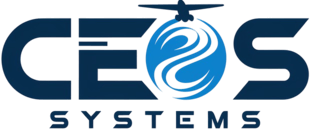Air quality incidents on Delta flights have become a significant concern for both passengers and crew members. Understanding the various causes and safety implications of unusual cabin odors is crucial for anyone who frequently travels by air. Let’s explore the key aspects of this important aviation safety issue.
Understanding Delta Flight Odor
Delta flight odor incidents involve unexpected smells detected in aircraft cabins that can lead to emergency protocols and flight diversions. These situations require immediate attention from cabin crew members who must follow strict safety procedures to ensure passenger well-being. Modern aircraft feature advanced air filtration systems, yet unusual odors can still occur, ranging from minor inconveniences to serious safety concerns.
What is Delta Flight Odor?
Delta flight odor encompasses any unexpected or unusual smells within Delta Air Lines aircraft cabins. When detected, these incidents often trigger immediate safety protocols, including:
- Rapid assessment of potential sources
- Implementation of emergency procedures
- Possible flight diversions to nearby airports
- Complete passenger deplaning
- Thorough aircraft inspection by maintenance crews
Common Causes of Airplane Odors
| Source Category | Specific Examples | Characteristics |
|---|---|---|
| Mechanical Issues | Engine oil leaks, overheating components | Burning or chemical smell |
| Electrical Problems | Short circuits, overheating wiring | Acrid, burning plastic odor |
| Environmental Factors | De-icing fluids, fuel vapors | Chemical or fuel-like scent |
| Operational Sources | Cleaning chemicals, galley operations | Various distinctive smells |
Causes of Odors in Delta Flights
Aircraft cabin odors can originate from multiple sources, requiring careful evaluation by maintenance teams. The identification process is crucial for implementing effective solutions and preventing future incidents.
Mechanical and Technical Issues
- Oil leaks from engines or auxiliary power units
- Hydraulic fluid leaks producing sweet, acrid odors
- Overheating electrical components
- Ventilation system malfunctions
- Circuit breaker or avionics equipment issues
Passenger-Related Factors
The confined space of aircraft cabins can amplify various passenger-generated odors, including:
- Personal hygiene issues on long-haul flights
- Strong-smelling food items brought onboard
- Overheating electronic devices
- Prohibited items with chemical odors
- Personal care products and perfumes
Environmental and External Factors
Environmental conditions and external substances can significantly impact air quality during Delta flights. Here are the main external factors that contribute to cabin odors:
- De-icing fluids entering through air conditioning systems during winter operations, producing sweet antifreeze-like smells
- Jet exhaust fumes from nearby aircraft during taxi or takeoff queues
- High humidity conditions amplifying existing odors
- Atmospheric pollution in certain flight paths affecting cabin air quality
- Chemical contaminants from nearby industrial facilities during ground operations
- Runway chemical spills or construction activities creating persistent odors
Safety Concerns Related to Flight Odors
Unusual aircraft odors represent critical safety concerns that demand immediate attention from airlines like Delta. When unexpected smells occur, flight crews activate specific safety protocols to protect all passengers and crew members. While these incidents are uncommon, they can indicate issues ranging from minor mechanical problems to serious fire hazards that could compromise flight safety.
The impact extends beyond physical safety to include psychological effects on passengers and crew. To address these concerns, Delta has implemented comprehensive response frameworks that emphasize transparent communication during odor incidents, helping maintain passenger confidence while addressing potential hazards.
Impact on Passenger Health and Comfort
Cabin odors can cause immediate health effects, particularly for sensitive individuals. Common symptoms include:
- Headaches and nausea
- Eye irritation
- Dizziness
- Breathing difficulties
- Heightened reactions in pressurized environments
The psychological impact often persists beyond the flight, potentially causing increased anxiety about future air travel. Delta’s response includes providing medical assistance and accommodation measures for affected passengers, recognizing that passenger well-being remains paramount during safety interventions.
Airline Safety Protocols and Measures
| Protocol Stage | Actions Taken |
|---|---|
| Initial Response | Odor detection, assessment, crew communication |
| Immediate Measures | Oxygen mask usage, source identification, emergency preparation |
| Diversion Protocol | Landing at nearest suitable airport, maintenance inspection |
| Ground Inspection | Comprehensive system checks, issue resolution, safety verification |
Addressing and Mitigating Odors in Flights
Modern aircraft employ sophisticated ventilation systems that completely refresh cabin air every 2-3 minutes, combining fresh outside air with HEPA-filtered recirculated air. Despite these advanced systems, certain situations still require additional interventions. Delta continues investing in improved odor detection and remediation technologies, recognizing that effective odor management directly impacts both passenger satisfaction and operational efficiency.
Technological Solutions for Odor Control
Aircraft manufacturers and airlines have revolutionized cabin air quality through advanced technological solutions. Modern commercial aircraft feature sophisticated HEPA filtration systems that remove 99.97% of airborne particles down to 0.3 microns in size. These systems work alongside specialized carbon filters designed to capture volatile organic compounds (VOCs) and other gaseous odor sources, providing comprehensive air purification.
- Advanced HEPA filtration systems for particle removal
- Specialized carbon filters for VOC absorption
- Continuous air quality monitoring systems
- Electronic sensors for early detection
- UV light sanitization technology
- Ionization systems for air purification
- Enzymatic cleaning solutions
Best Practices for Airlines and Passengers
| Stakeholder | Responsibilities |
|---|---|
| Airlines | Rigorous maintenance schedules, specialized odor response teams, systematic inspection protocols |
| Passengers | Limiting scented products, reporting unusual odors, following carry-on guidelines |
Airlines maintain comprehensive odor management strategies through regular system inspections and specialized rapid response teams. These teams employ standardized protocols and advanced detection equipment to identify and resolve odor-related issues before they become safety concerns.
Passenger cooperation plays a crucial role in maintaining optimal cabin air quality. By limiting the use of strong fragrances, promptly reporting unusual odors, and following airline guidelines for carry-on items, travelers contribute to a more comfortable flying environment. This collaborative approach between airlines and passengers creates an effective framework for managing cabin odors while maintaining the highest safety standards.
